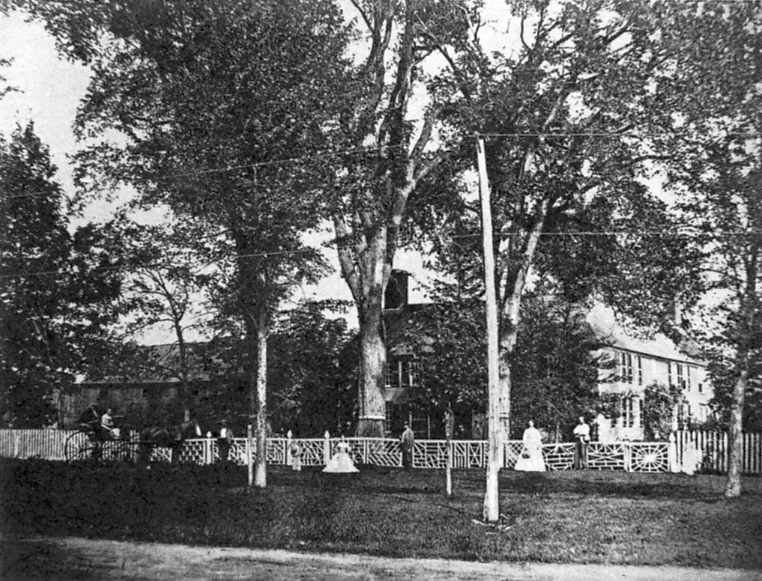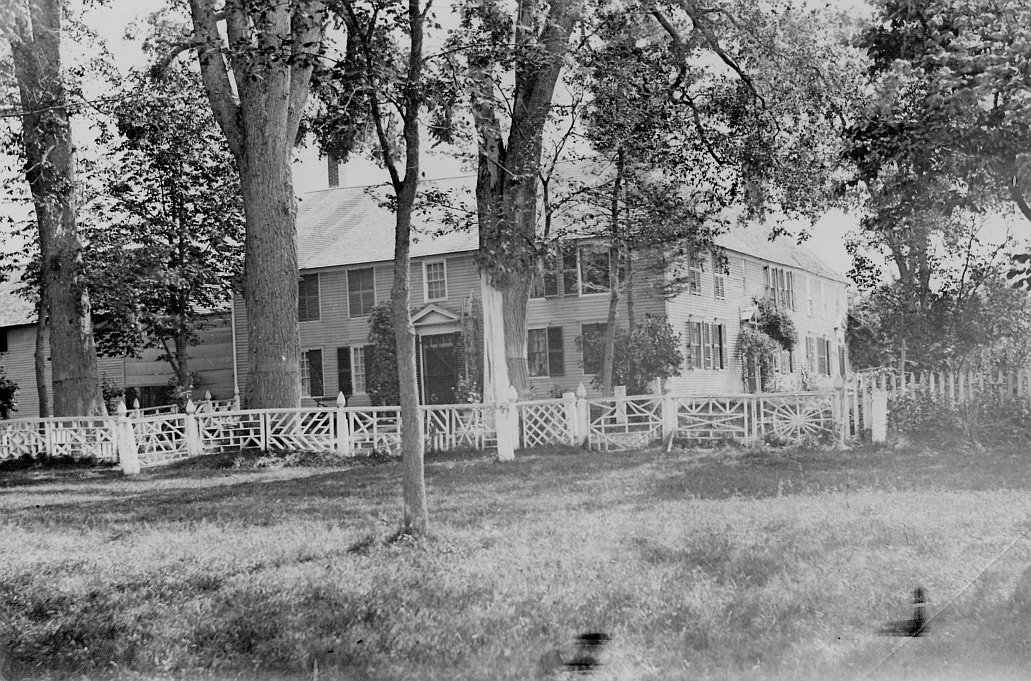By John M. Holman, Contributing Writer
 The “Wingate-Toppan Garrison” house, a stockade house, was built during the war with the Indians about 1700 and a stockade put around it about 1720 by Colonel Joshua Wingate.
The “Wingate-Toppan Garrison” house, a stockade house, was built during the war with the Indians about 1700 and a stockade put around it about 1720 by Colonel Joshua Wingate.
Colonel Wingate’s daughter, Sarah, later married Dr. Edmund Toppan on June 29, 1727 and lived on the homestead. Their son, the Hon. Christopher Toppan, also lived there. This house stood until 1900, a total of 180 years, and was then razed. The site is approximately near the Galley Hatch Restaurant and the Hampton Cinema Six, at the junction of Lafayette Road and Winnacunnet Road, on the south side, or as it was called in those days, “TOPPAN’S CORNER“.
“Old New Hampshire”, by Newton Marshall Hall, printed in the July edition of the New England magazine, had this to say about “Toppan’s Corner”:
“On the left of this (Lafayette) road, nearly facing the (Whittier) Hotel, surrounded by magnificent elms, stands the Toppan mansion, built in the somewhat rare type of colonial architecture, in which two wings meet at a right angle. The house was built about the year 1720 and has been occupied by the Toppan family until very recently.”
This grand old building was used at various times in the 1700’s as a Garrison house for protection against possible Indian attacks, and was sometimes known as the “TOPPAN GARRISON HOUSE”.
The Toppan Garrison House’s “spider web” fence has a history or legend all its own. When Mr. Toppan hired a carpenter to build a wooden fence in the front of his house, he specifically instructed the carpenter to be sure that each section of the fence would be of a different design. Having said this, the carpenter proceeded with the building of the fence, until he came to the last section and had run out of ideas. Looking down in the grass, he noticed a spider’s web, and proceeded to construct the last section as a spider web. Hence, the “spider web” fence.
After razing in October 1901, the huge front door was salvaged and is now on the one-room District School House located on the Meeting House Green, near the Tuck Memorial Museum on Park Avenue, Hampton.
On this Green, the first settlers of Hampton, under Rev. Stephen Bachiler, built their first meeting house in 1638. Here, also, appeared the first homes around the Green and early Hampton grew and prospered. Today, the Green contains the buildings of the HAMPTON HISTORICAL SOCIETY: The Tuck Memorial Museum, the One-Room District School House, the Farm Museum and the Fire Museum. Various historical markers of Hampton’s colorful past can also be viewed on the Green as well.
The following account of the WINGATE-TOPPAN GARRISON HOUSE is quoted from page 31 the booklet “THE COLONIAL GARRISONS OF NEW HAMPSHIRE” published by The New Hampshire Society of The Colonial Dames of America and printed by The News-Letter Press of Exeter, NH in 1937. (Available at the Lane Memorial Library in Hampton):
“This house was built about 1700 by Col. Joshua Wingate, who was born 2 Feb. 1679. It was early called “The Garrison House,” being stoutly constructed and the residence of the military commander, and later used as a place of refuge in threatened Indian attack. After Col. Wingate’s daughter, Sarah, married Dr. Edmund Toppan, the property passed into the Toppan family and became known as ‘the old Toppan house.’ It was demolished in 1900. (Harold Murdock Taylor, in ‘Anthony Taylor of Hampton’, 1935, pp. 67-68.)
Many people wishing to inspect the old building and the floors being deemed unsafe, it was torn down, in which process it was found that seven distinct additions had been made to the house during its two hundred years of existence. (Christopher S. Toppan, 1937.) The barns are still standing. The cellar hole, now surrounded by elm trees, shows the site of the garrison which is on the [east] side of Lafayette Road about five hundred feet south of Whittier’s Corner. Old photographs show an ornamental fence in front of the house consisting of fancy panels eight feet long, a different design in each panel, one being a spider web. The posts were ornamented with turned tops. The ‘History of Hampton’ (by Joseph Dow – 1892) states that the house was originally surrounded by a stockade.”
For a ‘tour’ of the house written by onetime resident Mary C. Toppan, click here.
